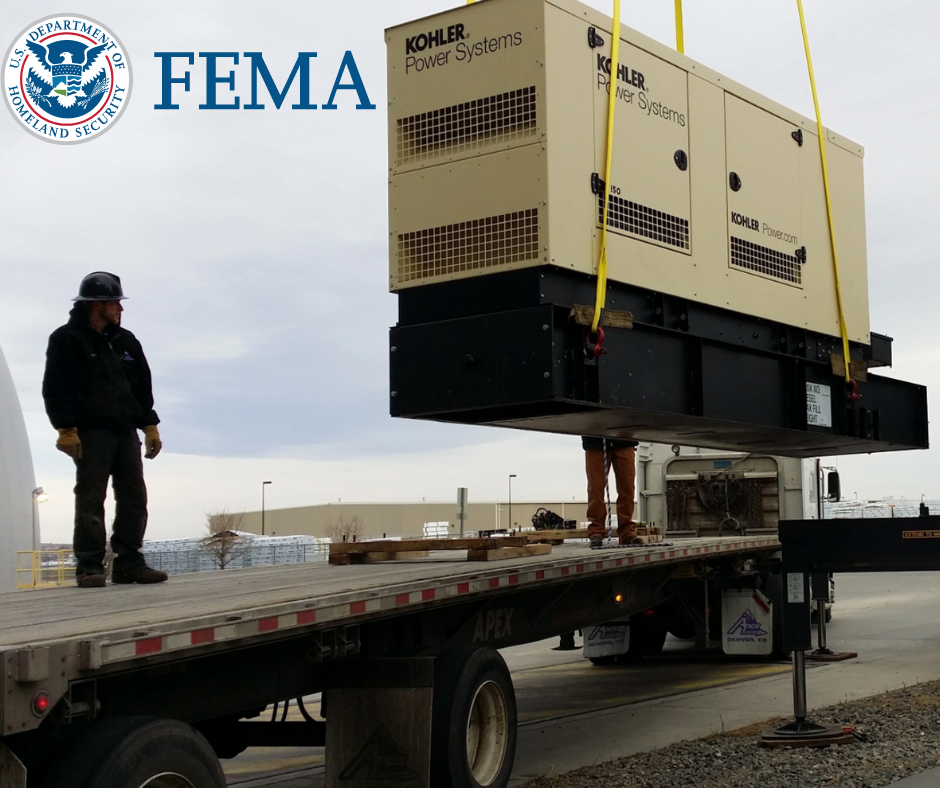FEMA Emergency Generator Installations

By: Dave Varga | Nov 03, 2021
The Federal Emergency Management Agency (FEMA) assists in many types of federal, state, and even some foreign disasters. FEMA, with the assistance of the Army Corps of Engineers (USACE), provides guidance and aid for many types of large disasters, including hurricane damage. Let’s take a look at how FEMA responds to a hurricane disaster with the installation of emergency generators.
After a large destructive hurricane, a state can ask FEMA for assistance to include the installations of emergency generators. FEMA will use USACE to provide site assessments for generator needs as the locations are identified by the state. USACE will visit a site that can include such locations such as temporary shelters, fire and police stations, sewage pump stations, government buildings, clinics, and more. USACE will visit the sites and determine if a generator can be installed, how the generator will be installed, and what size generator will be needed. USCE will then supply FEMA with a complete work order that includes site pictures and basic installation guides.
To complete the generator installations, FEMA will use a preapproved general contractor experienced in this field. The general contractor has a network of electrical subcontractors that will supply the electricians for each mission. A typical electrical staff would be an electrical lead (master electrician), a couple QA/QC (quality assurance, quality control) master electricians, and a variety of JW’s (journeymen electricians) and electrical helpers. A local base is set up with individual office trailers for FEMA, USACE, and the general contractor. Once all parties are in position and the crews are on site (usually a day after the storm), the state will begin sending requests for assessments which quickly turn into work orders. The work orders are physically handed over to the general contractor and the crews and generators are dispatched for installation.
Within one hour, a crew will head out with the FEMA generator in tow, heading to their destination. The crew has with them the FEMA supplied materials as requested on the USACE work order. Once on site, the generator is quickly unloaded into the designated location and waits for the fuel truck to arrive. During this time, the crew will roll out the THWN conductors onto the ground, drive a ground rod at the generator, connect the grounding electrode conductor, and make the building connection. The utility feed will be “safed off” and caution tape installed to alert others of this somewhat safe and temporary emergency installation.
Yes, you read that correctly. THWN conductors are laid on the ground. Not to mention, cabinet and panel doors are left ajar to permit the entry of these conductors and the buildings supply side bonding jumper is left in place. The new generator ground rod is creating a parallel neutral path in some cases, and of course there is not an inspection by the AHJ. The installations hardly meet OSHA or National Electrical Code requirements. They are at least quick and temporary, and essential to the people and facilities in need of this emergency power. These rough electrical installations are not perfect, but they do and have saved the lives of many people in need.
What are your thoughts about this type of installation? Leave your questions or comments below.


Awesome! Something I really needed, duties of a foreman!